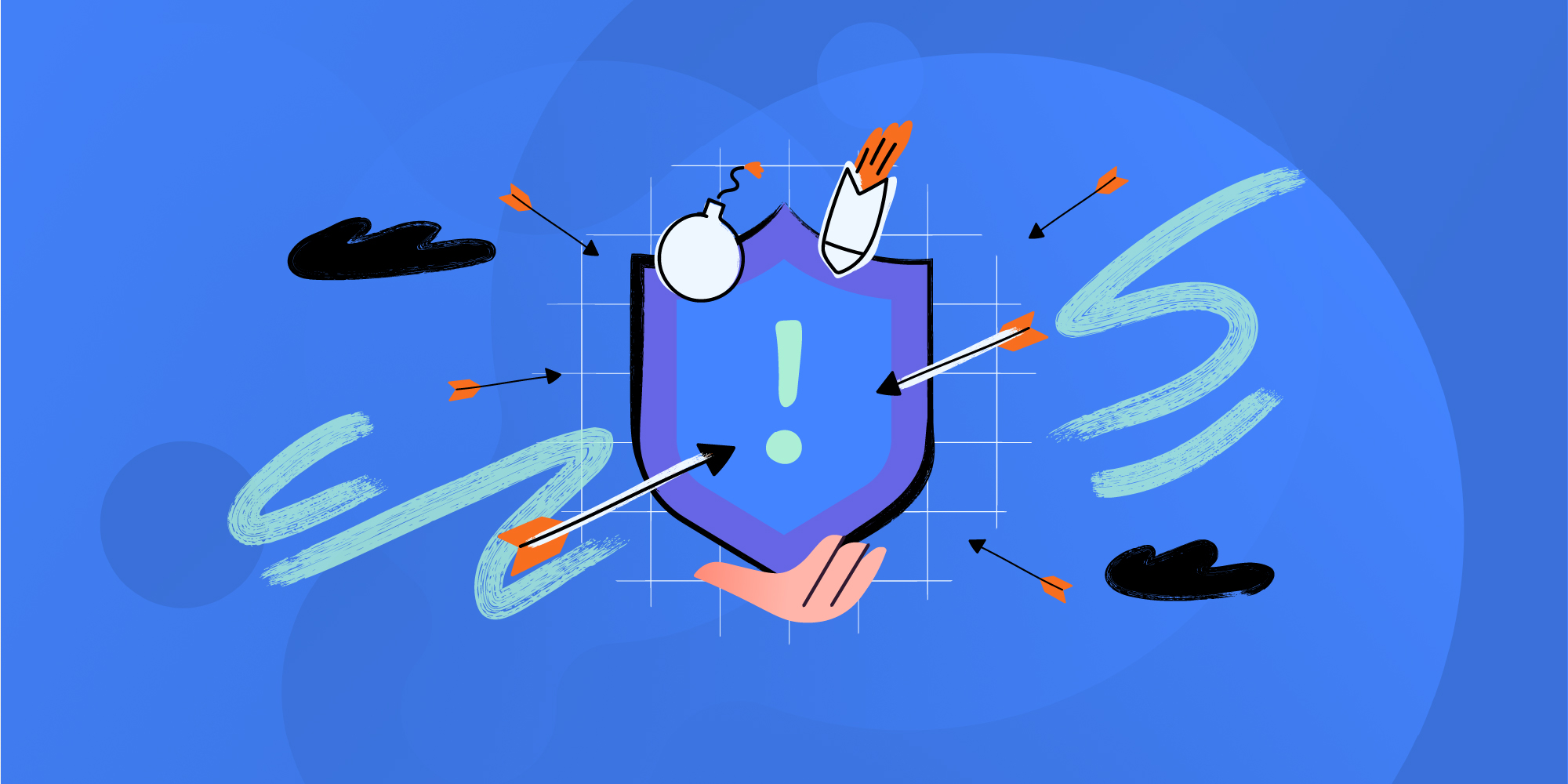Cybersecurity has become more than just a buzzword; it's a necessity. With the increasing reliance on technology, businesses and individuals alike are more vulnerable than ever to cyber threats. But what exactly does cybersecurity entail, and why is it so crucial?
As we explore this concept, we'll dive deep into its importance, the various types of cybersecurity measures available, and the threats they protect against. By understanding these key aspects, you'll be better equipped to safeguard your digital assets and navigate the complexities of today's cyber landscape.
So, let's get started!
What is cybersecurity?
Cybersecurity refers to the practice of protecting systems, networks, and data from digital threats. These attacks, often referred to as cyber attacks, can lead to unauthorized access, data breaches, and even financial losses. The goal of cybersecurity is to create a secure environment where data is protected from these threats while ensuring the integrity, confidentiality, and availability of information.
The scope of cybersecurity is broad, encompassing everything from safeguarding personal data on individual devices to implementing robust security protocols for large organizations.
Whether you're an individual looking to protect your personal information or a business aiming to secure your operations, cybersecurity is essential in maintaining a safe digital presence.

Why is cybersecurity important?
The importance of cybersecurity cannot be overstated. In a world where data is the new currency, protecting that data is paramount. Without adequate cybersecurity measures, sensitive information can be easily accessed, stolen, or manipulated, leading to significant consequences.
Moreover, the rise of remote work and the increasing interconnectedness of devices have further emphasized the need for robust cybersecurity practices. As more devices become connected to the internet, the potential entry points for cyber threats multiply, making comprehensive cybersecurity strategies and Endpoint Management more critical than ever.

Types of cybersecurity
Cybersecurity can be categorized into various types, each focusing on different aspects of digital security. Understanding these categories helps in implementing a holistic approach to protecting your digital assets.
1. Network security
Network security involves protecting the integrity and usability of network data. It includes a range of technologies, devices, and processes designed to safeguard the network from unauthorized access, misuse, and malicious attacks.
With the increasing complexity and sophistication of network threats, it's crucial to have effective network security measures in place. One key aspect of network security is network flow monitoring, which involves capturing and analyzing data about network traffic.
2. Information security
Information security focuses on protecting sensitive information from unauthorized access, disclosure, alteration, and destruction. This type of cybersecurity is crucial in maintaining the confidentiality, integrity, and availability of data.

3. Application security
Application security involves securing software applications by finding, fixing, and preventing security vulnerabilities. This type of cybersecurity is essential in ensuring that applications are safe from attacks that could exploit their vulnerabilities.
4. Cloud security
Cloud security encompasses policies, technologies, and controls deployed to protect data, applications, and the associated infrastructure in cloud computing environments. As more businesses move their operations to the cloud, the need for robust cloud security measures becomes increasingly important.

5. Endpoint security
Endpoint security refers to the protection of individual devices like computers, smartphones, and tablets from cyber threats. By securing these endpoints, organizations can prevent breaches that could lead to widespread network infections.
There is a recent case that shows how important this type of cybersecurity is: The CrowStrike outage. While we are still trying to understand its complete implications, we've had to reassess our our Endpoint Management practices and tools.
Types of cybersecurity threats
Cyber threats come in various forms, each posing unique challenges to cybersecurity efforts. Understanding these threats is the first step in developing effective defense strategies.
1. Malware
Malware, short for malicious software, includes viruses, worms, trojans, and other harmful programs that can infiltrate systems and cause damage. Malware can steal, encrypt, or delete sensitive data, making it one of the most common cyber threats.
2. Phishing
Phishing is a type of cyber attack where attackers pose as legitimate entities to trick individuals into providing sensitive information. These attacks often come in the form of deceptive emails or messages, leading to unauthorized access to personal or financial data.
3. Ransomware
Ransomware is a type of malware that locks or encrypts a victim's data, demanding a ransom for its release. This type of attack can be devastating for both individuals and organizations, leading to significant financial and operational losses.
4. DDoS attacks
Distributed Denial of Service (DDoS) attacks involve overwhelming a network or website with traffic, rendering it unusable. These attacks are often used to disrupt services and can cause significant downtime and revenue loss.
5. Insider threats
Insider threats come from within an organization, often involving employees or contractors who misuse their access to sensitive information. These threats can be intentional or accidental but pose a significant risk to cybersecurity.

Best practices of cybersecurity
Implementing best practices in cybersecurity is essential for protecting against the various threats that exist today. These practices form the foundation of a strong cybersecurity strategy.
1. Regular software updates
Keeping software up to date ensures that any vulnerabilities are patched, reducing the risk of exploitation by attackers. Regular updates are a simple yet effective way to enhance cybersecurity.
2. Strong password policies
Enforcing strong password policies, including the use of complex and unique passwords, is crucial in preventing unauthorized access. Password management tools can also help in maintaining secure credentials.
3. Employee training
Educating and training employees about cybersecurity best practices and the risks of cyber threats is vital in creating a security-aware culture. Regular training sessions can help employees recognize and avoid potential threats.
4. Multi-factor authentication (MFA)
MFA adds an extra layer of security by requiring more than just a password to access accounts. This additional verification step significantly reduces the likelihood of unauthorized access.
5. Data encryption
Encrypting data ensures that even if it falls into the wrong hands, it remains unreadable without the proper decryption key. This practice is essential for protecting sensitive information.
Cybersecurity frameworks
Cybersecurity frameworks provide structured guidelines for organizations to manage and mitigate cyber risks. These frameworks help in developing comprehensive security strategies that align with industry standards.
1. NIST Cybersecurity Framework
The NIST Cybersecurity Framework is a widely recognized set of guidelines for managing cyber risks. It includes standards, guidelines, and best practices to help organizations improve their cybersecurity posture.
2. ISO/IEC 27001
ISO/IEC 27001 is an international standard for information security management systems. It provides a systematic approach to managing sensitive company information, ensuring it remains secure. We broke down the process into manageable steps through an implementation checklist you can follow and adapt to your specific scenario and needs.

3. CIS Controls
The CIS Controls are a set of best practices for securing IT systems and data. These controls are designed to help organizations prioritize and implement specific security measures to protect against cyber threats.
4. GDPR Compliance
The General Data Protection Regulation (GDPR) sets strict guidelines for the collection, processing, and storage of personal data. Organizations must comply with GDPR to avoid hefty fines and maintain trust with their customers.
5. HIPAA Compliance
The Health Insurance Portability and Accountability Act (HIPAA) requires healthcare organizations to implement strict cybersecurity measures to protect patient data. Compliance with HIPAA is essential for safeguarding sensitive health information.
Cybersecurity 5 highest-paying jobs
The field of cybersecurity offers lucrative career opportunities, with some of the highest-paying jobs in the tech industry. These roles require specialized skills and knowledge to protect against complex cyber threats.
1. Chief Information Security Officer (CISO)
The Chief Information Security Officer (CISO) is responsible for developing and implementing an organization's cybersecurity strategy. This high-level role involves overseeing security operations, managing risk, and ensuring compliance with security regulations.
2. Security architect
A Security Architect designs and implements secure network and system architectures. This role requires a deep understanding of cybersecurity principles and the ability to create robust security infrastructures.
3. Penetration tester
Penetration Testers, also known as ethical hackers, simulate cyber attacks to identify vulnerabilities in systems and networks. Their findings help organizations strengthen their cybersecurity defenses.
4. Security consultant
Security Consultants provide expert advice on cybersecurity strategies and best practices. They work with organizations to assess risks, develop security policies, and implement effective security measures.
5. Cybersecurity engineer
Cybersecurity Engineers are responsible for designing, implementing, and maintaining security systems to protect against cyber threats. Their role is critical in ensuring that an organization's IT infrastructure is secure and resilient.
Unlocking Career Progression
Discover the strategies to lifelong learning and evolvement in IT
Download for free
Cybersecurity courses and cybersecurity certifications
Staying ahead of the curve is crucial. Whether you're just starting or looking to advance your career, the right courses and certifications can make all the difference. They not only provide you with the necessary skills but also validate your expertise, making you a valuable asset in the industry.
From foundational courses that introduce you to the basics of cybersecurity to advanced certifications that recognize your specialized skills, there's something for everyone. Let's explore some of the most recognized courses and certifications that can help you excel in this field.
Cybersecurity courses
Here’s a list of known cybersecurity courses, ranging from beginner to expert levels:
- Introduction to Cybersecurity (Coursera): A beginner-friendly course that covers the basics of cybersecurity principles and practices.
- Cybersecurity Fundamentals (edX): This course offers an in-depth understanding of core cybersecurity concepts, suitable for those new to the field.
- CompTIA Security+ Certification Prep (Udemy): Aimed at intermediate learners, this course prepares you for the CompTIA Security+ certification, covering essential security topics.
- Certified Ethical Hacker (CEH) Bootcamp (EC-Council): An advanced course designed for those looking to specialize in ethical hacking and penetration testing.
- Cybersecurity Specialization (Stanford Online): A comprehensive course for experts, covering advanced topics such as cryptography, security protocols, and threat detection.
Top cybersecurity certifications
Earning a cybersecurity certification is a great way to demonstrate your expertise and commitment to the field. Here are some of the top certifications recognized in the industry:
- Certified Information Systems Security Professional (CISSP): Ideal for experienced security practitioners, managers, and executives, CISSP covers a broad range of cybersecurity topics.
- Certified Ethical Hacker (CEH): Focused on ethical hacking techniques, this certification is for professionals who want to identify and fix security vulnerabilities.
- CompTIA Security+: A well-rounded certification that covers foundational cybersecurity skills, suitable for those entering the field.
- Certified Information Security Manager (CISM): Aimed at management-level professionals, CISM focuses on managing and governing enterprise information security.
- Certified Information Systems Auditor (CISA): This certification is essential for auditors who assess, control, and monitor an organization’s IT and business systems.
These courses and certifications not only enhance your knowledge but also boost your credibility in the cybersecurity industry, opening doors to new opportunities and career growth.
Final thoughts
In an era where cyber threats are constantly evolving, cybersecurity has become a fundamental aspect of both personal and professional life. By understanding the various types of cybersecurity measures and threats, you can better protect your digital assets and contribute to a safer online environment.
Whether you're looking to enhance your own cybersecurity practices or considering a career in this dynamic field, staying informed and proactive is key. Remember, in the world of cybersecurity, prevention is always better than cure.
Frequently Asked Questions
1. What is the primary goal of cybersecurity?
The primary goal of cybersecurity is to protect systems, networks, and data from unauthorized access and attacks, ensuring the confidentiality, integrity, and availability of information.
2. Why are regular software updates important for cybersecurity?
Regular software updates patch vulnerabilities, making it harder for attackers to exploit weaknesses in the system. Keeping software up to date is a simple yet crucial cybersecurity practice.
3. What are some common types of cybersecurity threats?
Common types of cybersecurity threats include malware, phishing, ransomware, DDoS attacks, and insider threats. Each poses unique challenges and requires specific defense strategies.
4. What role does encryption play in cybersecurity?
Encryption ensures that data remains secure even if it falls into the wrong hands. By converting data into an unreadable format, encryption protects sensitive information from unauthorized access.















